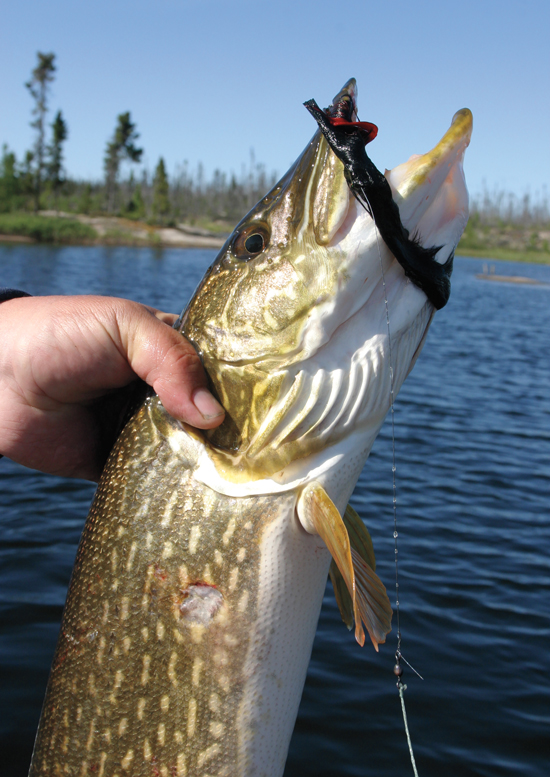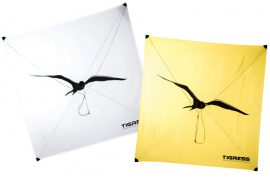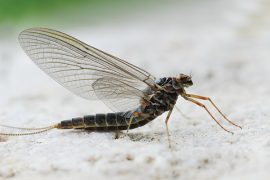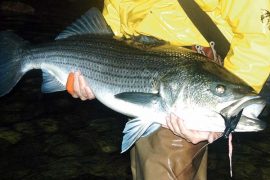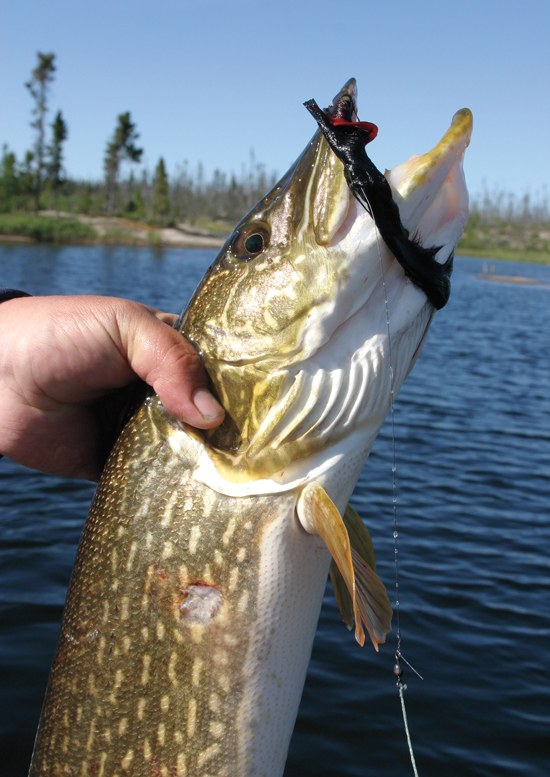
In the vast stretch of North American pike habitat, spring begins anywhere from late February in the most southerly distribution to mid-July in the sub-Arctic. But in all that habitat, over thousands of miles, five key techniques stand out when the water is 38°F to 50°F.
Those five techniques include big flies presented on a floating line, which is where spring for North American pike apparently begins. It happens in Ohio, where Mad River Outfitters guide fly fishermen for river pike on the Tuscarawas, Cuyahoga, and other streams. “We were the first people doing it in Ohio—guiding fly fishermen to big pike,” says Brian Flechsig, owner of Mad River since 1994. “The season on pike never closes here, so we can fish for them at ice-out. The northeast quadrant of Ohio is the furthest south we know of for pike fishing.”
They reportedly see quite a few in the 35- to 38-inch range. “Not too many over 40 inches here in the southern end of the pike’s range, but some real sporty fish on a flyrod,” says Guide Josh McQueen. “We practice catch-and-release only, since these rivers don’t hold large populations. Our lakes are too warm and shallow, but these rivers have shallow backwaters where pike can successfully spawn. We sight-fish in the backwaters from late February into March. We prefer bucktail flies—the thickest shafted hairs we can find, with a floating line and no-sink tip so the fly just hangs there.”

At the other end of the pike range, up around the 60th parallel, at places like Nueltin, Kasba, and Misaw lakes, ice-out happens in June or July. Summer sets in quickly, with aquatic plants shooting up and flowering almost overnight. From there to the far northern extremes of pike habitat, in Great Slave Lake and just beyond, pike stay relatively shallow all summer—which lasts about six weeks—absorbing as much sunlight as time allows. Sight-fishing is in order. Guides and clients wear the best amber-lens sunglasses they own, stalking backwaters and shallow bays, poling the boat slowly until a log with razor teeth comes into view.
Nothing beats a black bunny strip presented on a flyrod in this situation. An unweighted strip 4 to 7 inches long tied to a straight-shank 1/0 to 3/0 hook suffices. It needs to be wet, and should be presented on an 8- to 10-weight floating line. I tie a couple feet of 30-pound mono to the flyline, and connect that to 6 feet of 20-pound mono before tying on a 14-inch nylon-covered wire leader. Nylon is easy. Just loop it through a swivel on one end, the fly on the other, twist the tags tight around the leader and melt the nylon to itself with a match or lighter.
The reasoning is simple: As our friends at Mad River explain, a fly hovers like a baitfish hanging in the wheelhouse of ol’ Snaggle Tooth. I’ve tried every kind of pike fly, and a bunny out hops them all early in the year for me.
Living Deadbaits
In the mid-1990s I ventured north past Flin Flon to the Churchill River with a group of guys who made the trip every year in search of ice-out walleyes and pike. We camped out with a generator and six 55-gallon drums of gasoline for the boats. This group had been doing this for years and had everything figured out. Walleyes came easy on jigs and minnows and all you needed for big toothy critters was a large Dardevle. But after three days, the only big pike caught between 10 anglers bit a jig-minnow combo. Spoons weren’t cutting it.
Which came as no surprise. I’ve never found spoons a strong early-spring option. Great sometimes, but never consistently so. I’d brought several boxes of dead ciscoes purchased from a commercial fisherman on Lake Superior, but nobody was interested in sitting and waiting for a pike to come to them. So I bided my time until one day at shorelunch I announced the adjacent backwater embayment was a fine to place to drop deadbaits and asked if anyone would like to join me. The oldest guy in the party volunteered.
In the 45 minutes that it took the boys to prepare lunch, the old man and I boated five big pike, all within view of our gathered companions. But if seeing is believing, it’s not necessarily convincing. The group stubbornly stuck to its guns, continued to throw spoons all week. But only one more big pike was caught by that tactic.
Deadbaits are scattered across most lakes at ice-out. These ghostly specimens of cisco, sucker, shad, smelt, and panfish are not wasted by big pike, which are stressed and hungry after a long winter. Stress, migration, and cold water can make spring pike lethargic, especially in the morning.
Large live suckers used…

